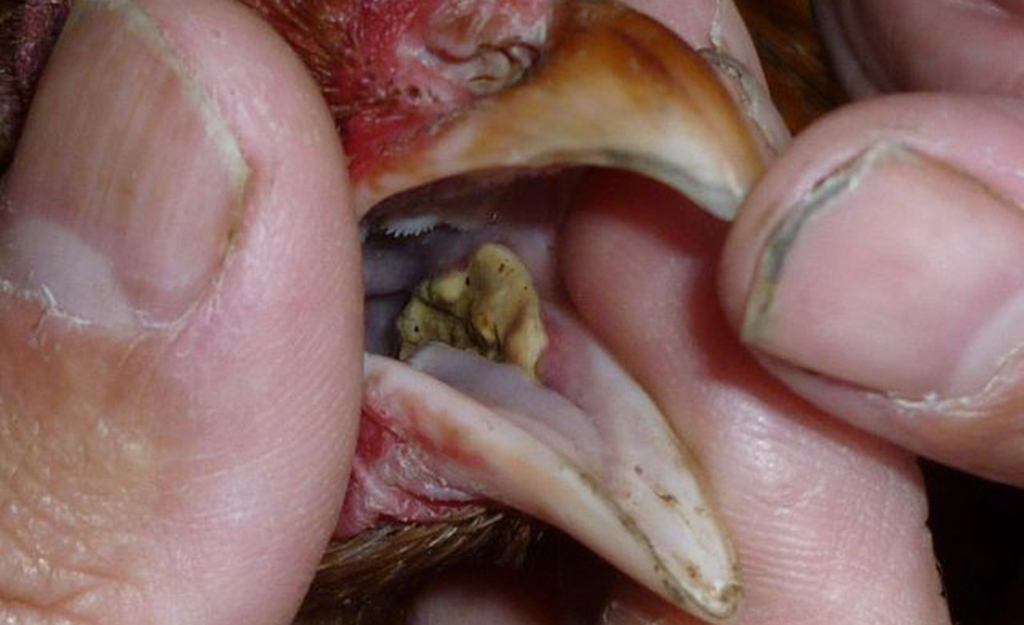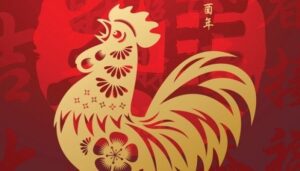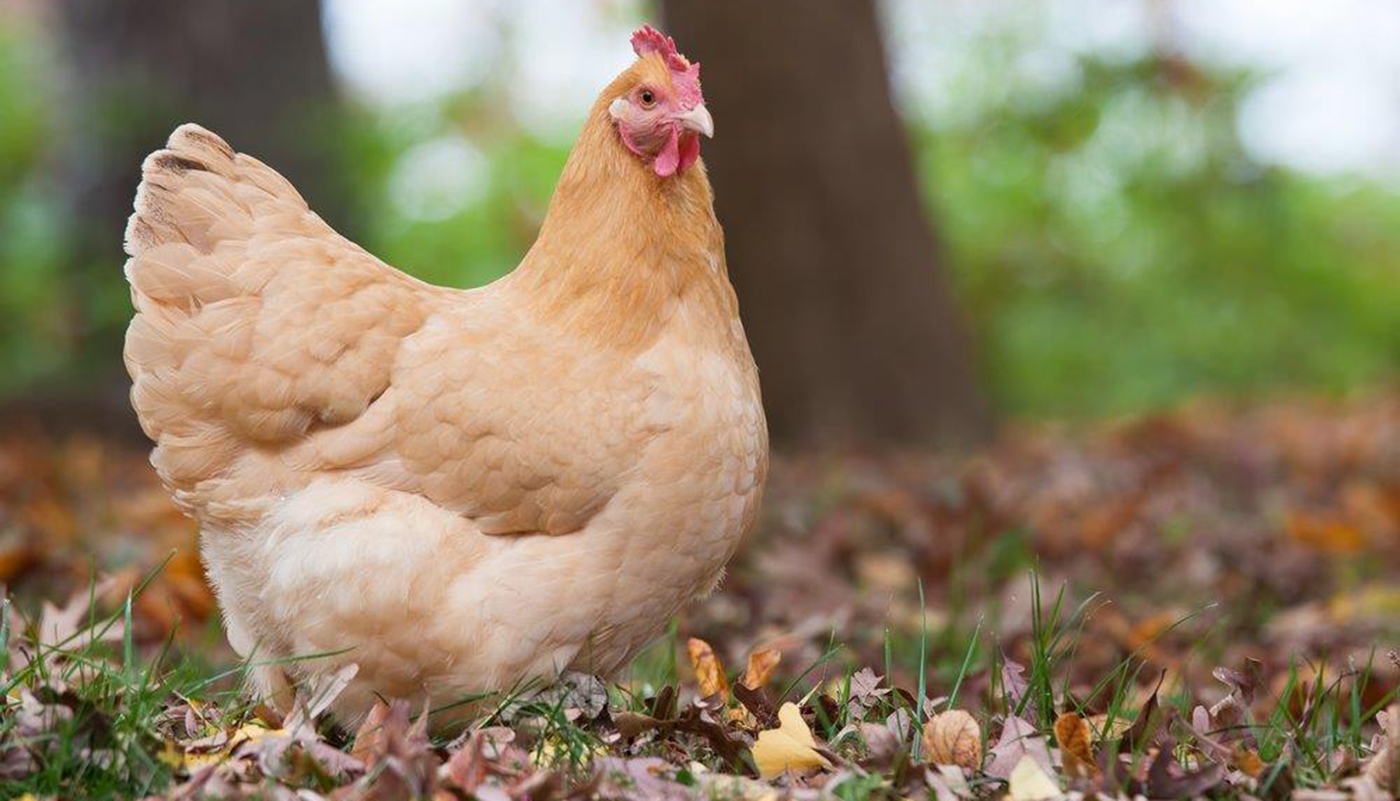
These unique looking chickens have a bit of a mysterious history as their origins are unknown.
They have been called spastic by their owners as they are rather clumsy and tend to spook really easily. This is only because they cannot see very well as their crest tends to cover their eyes and impair their vision.
They come in bearded and non-bearded varieties but they all have a full crest that looks like a cap on top of their heads. Their V-shaped combs make it look like a low-lying hairband pushing their crests back.
These chickens were once thought to be good producers of white eggs but today with selective breeding they are not the best of layers.
They appear to be skittish and weird but if their crest is lifted off their faces they are sweet friendly gentle birds that are a delightful addition to any flock.
| Country of Origin: | Unknown |
| American Poultry Association: | Yes, they are recognized as a breed of chicken in the United States They were admitted to the Standard of Perfection in 1874 in the Non-Bearded White Crested Black variety, Non-Bearded Golden variety and the Non-Bearded Silver variety. In 1883 the Bearded Golden variety, Bearded Buff Laced, Bearded White and Bearded Silver varieties were admitted. In 1938 the Non-Bearded Lace was admitted. In 1963 The Non-Bearded White Crested Blue was admitted. |
| Chicken Category: | Large Breed |
| Chicken Class: | Continental |
| Bantam Variety Available? | Yes – All Other Comb Clean Legged Bantam Classification |
| Good Starter Chicken? | They tend to startle easily due to their limited vision but are still quite friendly and hardy. If you are not afraid of a little extra work, they would make for a good starter chicken |
IDENTIFICATION⇒ |
Appearance/Body: They are medium sized chickens with a long neck and compact body covered in the soft feathery plumage of various unique styles and colors. Their small red wattles and V-shaped combs are usually completely hidden by their beards and crest. Their lard crest protrudes backwards from their heads like a wild thick bush or hair or a poofy hat. They have clean slate grey legs and 4 toes.
Color(s) Non-Bearded White Crested Black, non-Bearded Golden, non-Bearded Silver, Bearded Golden, Bearded Buff Laced, Bearded White, Bearded Silver, non-Bearded Lace and non-Bearded White Crested Blue
Comb: They have a V-shaped comb
Ave. Weight: Pullet: 4 lbs.
Hens: 4.5 lbs. Cockerel: 5 lbs. Rooster: 6 lbs. |
PURPOSE⇒ |
Eggs: They are fair egg layers.
They lay small to medium sized white eggs They lay about 100 – 120 eggs per year They will lay throughout the year but more in the summer months They start to lay eggs from around 24 weeks old.
Meat: They have white skin
They are not a good table bird
Breeding: They can be bred but will require either brood hens or an incubator to hatch their chicks
The hens do not get broody They do not make good brood hens They do not sit their eggs readily They are not good mothers and are quite happy to foster them out
Foraging: They do not mind foraging about but tend to stay close to their coop as they cannot see very well with their crests obscuring their vision
Show Bird: They are the most unusual birds with their beautiful crests making them an excellent show bird.
Pets: These birds make for a very entertaining pet
Other: They have been called spastic due to their crests that cover their eyes making them not able to see very well. This makes them spook rather easily.
|
CHARACTERISTICS |
|
|---|---|
| Life Expectancy: | The average lifespan is 7 years |
| Health: | They have no known health issues except if their crests get wet and drip into their eyes it can lead to various eye and or skin infections. |
| Temperament: | They are friendly and easy to handle. But they can seem to be a bit flighty and shy as they startle easily. |
| Flyers? | They can be flighty especially when startled |
| Noisy Birds? | They are noisy birds |
| Interaction with other chickens: | They do not mind mingling with other chickens/breeds but they do tend to get bullied by more aggressive breeds. |
| Good with kids? | They are good around supervised children |
| Socialize Behavior? | As they cannot see very well they tend to shy away from other domestic animals |
| Known predators: | They have their share of predators like all other chickens such as foxes and feathery predators from above such as hawks. Even though most dogs and cats leave them alone it is best to keep a wary eye on them. Check with local animal shelters, zoos, vets, animal control and or pet stores about common predators in your area. |
| Conservation Status: | These birds conservation status is recorded as “watch” by the American Livestock Conservancy. It is best to check on any special license or instructions that may be set up for owning these birds. This can be checked with your local or national conservation centers. |
IDEAL ENVIRONMENT |
|
|---|---|
| Garden Size: | The tolerate confinement well and adapt to most size gardens and or homesteads. |
| Ideal Climate: | They are adaptable to most climates although they are more tolerant to the heat than the cold. |
| Ideal Coop: | The rule of thumb for any coop is 50 cm x 50 cm per hen/rooster in the coop. Ensure there is a good space for the nesting boxes and nightly roosting rails at least 1.5 inches wide. Good ventilation for air but not too drafty especially in winter. It is always a good idea to raise the coop off the ground to give the birds a dry place to roost and lay especially in wet weather. For Bantam breeds it is best to have the coop in a protected shed or barn. |
| Ideal Coop Run: | As they cannot see very well if their coop run is completely covered it gives them a sense of security. They are also flighty, so it will keep them from flying the coop. |
| Ideal Flock Size: | They like the safety in numbers especially with other Polish hens, so they need two or more in their flock. |
| Special Instructions: | They have an abundance of feathers especially their crests that need to be kept dry and clean to avoid various skin diseases and infections. It is also a good idea to gently tie their crests back from their eyes with a very soft band. This will stop the bird from being skittish and spooking easily as they will be able to see better. Their crests can be clipped but they tend to grow back quite fast so gently tying it back is the better option. |
| Accessories: | The following accessories are ideal for your coop: Nesting boxes Straw for the boxes and roosting area Roosting rails Perches Water troughs/bowls Food bowls/feeders Heating lamp(s) Animal carrier for transport purposes |
| You may Also Like: | 45 FREE DIY CHICKEN COOP PLANS, TUTORIALS AND DESIGNS |
WHERE TO BUY THEM |
|
|---|---|
| Live Poultry Outlets: | There are some hatcheries and poultry farms that sell Polish chickens and the Bantam varieties. |
| Internet Poultry Websites: | Purely Poultry is an internet site that supplies Polish Chickens. A search and or some research is sure to bring up other Internet providers. Always check on the validity and reputation of an internet provider before purchasing your chickens. |
| Organizations: | Associations such as the American Poultry Association and the American Livestock Conservancy usually have a list of reputable Polish chicken suppliers/breeders and or clubs. |
| Breeders Clubs: | The Polish Breeders Club is a valuable source of information on Polish Chickens. |
| Other: | The organizations and or breeders listed above may also have a host of valuable information about your chickens. They will also be able to provide you with any special instructions, problems, etc. about your chickens. |
HISTORY
The origins of the Polish chicken are unknown and there is much debate as to why they were named Polish chickens. Some say it is because of their resemblance to some Polish chicken breeds, other say it is because of their crest which resembles the caps that were historically worn by Polish soldiers.
Poultry historians believe that the Polish chickens were taken from Spain to Holland around the time when the Spanish occupied the lowlands.
The breed was established in England by the 1700’s and birds of similar stature were depicted in by artists of the 16th through 18th century in both Italy and Holland.
The Dutch are to be credited with developing the breeds crests and their magnificent color varieties.
They were used in France around the same era as a production bird.
Polish chickens are believed to have arrived in America sometime between 1830 and 1840.
Their popularity waned with the introduction of the Leghorn chickens to America and England. They were no longer used as production birds but were still quite a popular exhibition bird.
NOTES / SPECIAL INSTRUCTIONS
As they are registered as a “watch” conservation status they may need an extra license to own or keep in your garden. For advice on what the bird’s conservation status and orders are please check with your local conservation department.
For breeders, it is imperative that you always check your bird’s bloodlines and ensure you are buying your birds from a reputed breeder/farm. In order to sell birds of such stature, they have to be recorded and documented, always check with local animal breeding organizations for these records.
These legitimate documents are also required should you wish to show your bird(s) in various poultry shows/competition showings.
For information and advice on adopting rescued animals, you can visit or contact your local animal welfare center.
Video
USEFUL LINKS
- Caring for your Chicken
- Feeding
- Health
- Socializing your Chicken
- Breeding Chicken
- Raising Chickens A-Z
- Hatching Eggs
- What is Molting
- Animal Shelter (ASPCA)
- American Veterinary Medical Association
- American Poultry Association
- American Animal Welfare Society
- American Animal Control
- American Animal Husbandry Society
References
- https://en.wikipedia.org
- https://livestockconservancy.org
- https://www.roysfarm.com
- https://www.mypetchicken.com
- https://www.backyardchickens.com
- https://www.feathersite.com/
 CONDITIONS THAT AFFECT THE DIGESTIVE SYSTEM OF CHICKENS
CONDITIONS THAT AFFECT THE DIGESTIVE SYSTEM OF CHICKENS The Essential Guide to Keeping Your Chickens Healthy: Tips for Beginners
The Essential Guide to Keeping Your Chickens Healthy: Tips for Beginners The Zodiac of Chickens: Matching Chicken Breeds to Astrological Signs
The Zodiac of Chickens: Matching Chicken Breeds to Astrological Signs Old English Game Chicken Breed – Everything You Need to Know
Old English Game Chicken Breed – Everything You Need to Know Sicilian Buttercup Chicken Breed – Everything You Need to Know
Sicilian Buttercup Chicken Breed – Everything You Need to Know BEST TEMPORARY/PORTABLE CHICKEN RUNS FOR THE BACK GARDEN TO BUY
BEST TEMPORARY/PORTABLE CHICKEN RUNS FOR THE BACK GARDEN TO BUY Orpington Chicken Breed – Everything You Need to Know
Orpington Chicken Breed – Everything You Need to Know 45 FREE DIY CHICKEN COOP PLANS, TUTORIALS AND DESIGNS
45 FREE DIY CHICKEN COOP PLANS, TUTORIALS AND DESIGNS Australorp Chicken Breed – Everything You Need to Know
Australorp Chicken Breed – Everything You Need to Know CONDITIONS THAT AFFECT A CHICKENS GUT
CONDITIONS THAT AFFECT A CHICKENS GUT Ancona Chicken Breed – Everything You Need to Know
Ancona Chicken Breed – Everything You Need to Know Chicken Vaccinations and why they are Important to a Flock
Chicken Vaccinations and why they are Important to a Flock